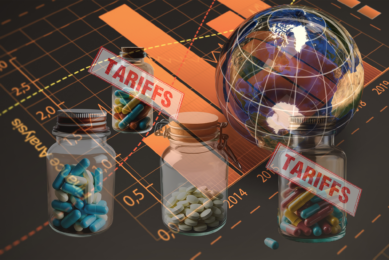Algae aka ‘green coal’ and ‘green protein’

Marine microalgae encompass attractive properties for biofuel production. The fat extracted biomass that is left behind after biofuel is made may be a promising carbon-neutral animal feed supplement.
When you read about algae there is often a discrepancy between macro- and microalgae. Macroalgae are commonly known as “seaweed”. The word “macro” means big so think of a big plant that can be found in the sea. Microalgae are often called phytoplankton. As the word micro means small, these plants are smaller than the seaweed plants, so small, that you can’t see them with the naked eye.
More sustainable
Microalgae are a potential source of renewable energy, and they can be converted into energy such as biofuel oil and gas. They sometimes call it the ‘green coal’, as the algae form a more sustainable alternative for the current fuel sources we use. The development of CO2-neutral fuels is one of the most urgent challenges facing in our society, to reduce gaseous emissions and their consequential climatic changes, greenhouse and global warming effects.
By-products for feed
Microalgae are used for human nutrition and fertiliser, but the most potential is sought in its use as biofuel source. Over the years, a number of research studies has been done in the field of optimising microalgae production. Just like other biofuel production processes (such as bio-ethanol), the left overs (by-products) often find their way into animal feed. As conventional raw materials are still scarce (and expensive) the inclusion of more alternative sources such as by-products from the biofuel industry is becoming more common. The nutritional value of the de-fatted biomass is similar to fishmeal, meaning it contains all the essential amino acids. It is also rich in vitamins and minerals, along with its unique bioactive compounds. Algae can thus be considered as a high quality protein source and has the potential to replace soy and corn in animal diets. Different sources of cultivated algae show promise in maintaining animal growth performance, and in some cases improving daily body weight gain. However, the de-fatted biomass of microalgal species, derived from the biofuel production research, has only recently shown feasibility in replacing current protein sources.
Testing the inclusion rates
Recently, an extensive review has been published in the Journal of Animal Science on the use of defatted biomass from the biofuel industry may replace some of the corn and soybean currently used for weanling pigs, broiler chicks and laying hens. Researchers at the Cornell University in the US acquired four types of full-fat and defatted microalgal biomass from biofuel production research (Cellana, Kailua-Kona, HI) that contain 13.9 to 38.2% crude protein and 1.5 to 9.3% crude fat. They further studied the safety and efficacy of supplementing 2 types of the biomass at 7.5 to 15% in the diets of weanling pigs, broiler chicks, and laying hens. Based on their responses of growth performance, egg production and quality, plasma and tissue biochemical indicators, and/or faecal chemical composition, all three types of animals were able to tolerate the microalgal biomass incorporation into their diets at 7.5% (on as-fed basis). This study showed that algae can be a good ‘green protein’ source for future animal diets and animal don’t reject it.
Is it cost-effective?
Although it might be an attractive protein from a nutritional perspective, what about the costs? No reliable information on commercial production of microalgae has been published, and only very approximate estimates of production volumes and costs for bulk biomass are possible: roughly 10,000 t/y and $10,000/t for Spirulina, 4000 t/y and US$20,000/t for Chlorella, 1000 t/y and US$20,000/t for Dunaliella, and 200 t/y and US$100,000/t for Haematococcus. These estimates are for direct production costs for dry weight, but otherwise not further processed algal biomass, and they do not include corporate, marketing, and other such indirect cost (Source: article from John Benemann in Energies, 2013). So what are the costs involved in using micro-algae by-products in animal diets? Of course the costs will be lower as mentioned here (because it’s a by-product). But in general – the costs must be reduced. The AlgaePARC (Algae Production And Research Centre), part of Wageningen UR in the Netherlands, is one of the institutions to develop knowledge, technology and process strategies for sustainable production of microalgae as feedstock for fuel, chemicals, food and feed at industrial scale. Nevertheless, I think algae will be the ‘green coal’ and the ‘green protein’ for the future. But more insight has to be gained on price and the quality (less variety in the batches) of the product. The future is green!











